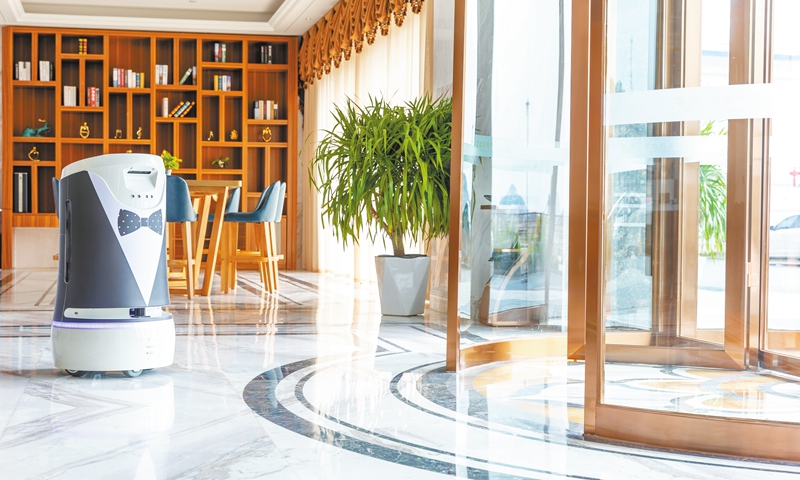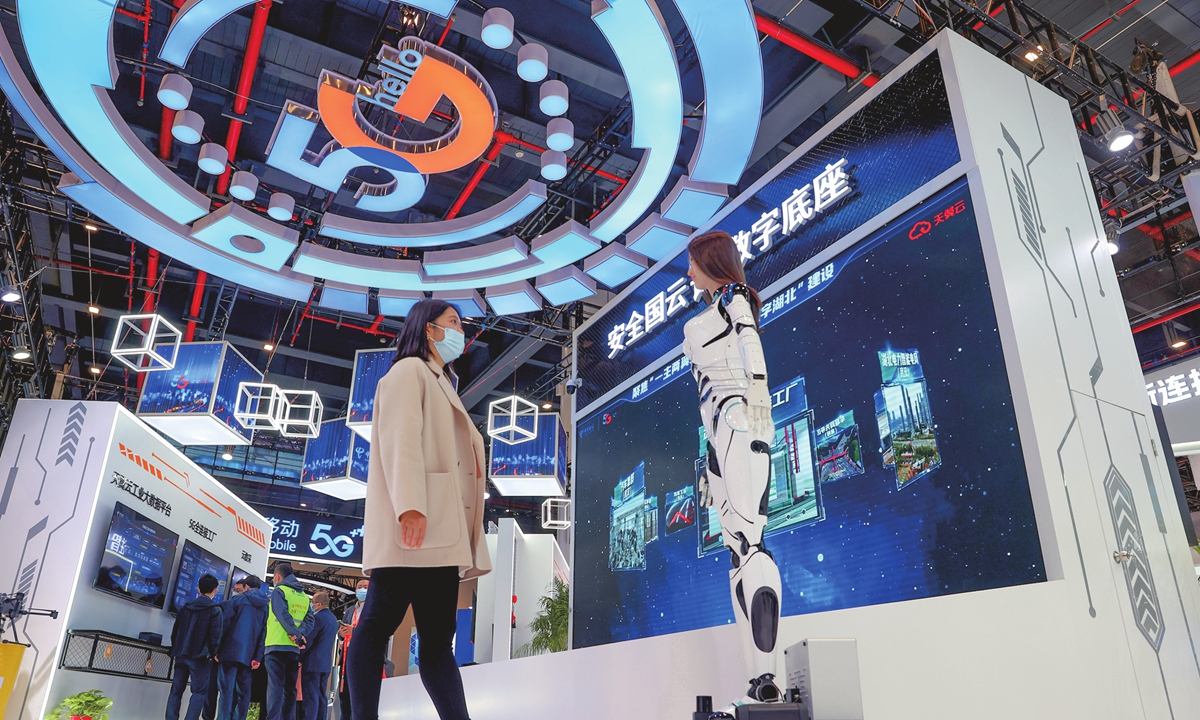From robot leagues to sports games -- China's humanoid robots accelerate commercialization through competition

Photo: Li Hao/GT
"Defense! Double-team! Straight drive!" The passionate commentary echoed across the green field, accompanied by the cheers and applause of the audience. Amid the lively atmosphere, the occasional sounds of hard collisions reminded everyone that this was no ordinary soccer match.
The scene took place at the 2025 RoBoLeague Robot Football Tournament in Beijing on Saturday. The collision sounds came from the special players on the field—humanoid robots, developed by Beijing-based Booster Robotics, a co-organizer of the event.
All participating robots rely entirely on AI strategies to operate autonomously, requiring no human intervention, and capable of independently getting up after falling.
This event was the first test match of the 2025 World Humanoid Robot Games and also China's first 3v3 AI robot football match.
From half-marathons to boxing matches and now football, as well as the upcoming 2025 World Humanoid Robot Games, the frequency, scale, and public attention toward robot competitions have been visibly increasing. The continuous stream of events has gradually familiarized the public with the capabilities of humanoid robots and AI technology. However, beyond the entertainment value of robot competitions, their significance for technological R&D and industrial application is even more noteworthy.
Participating teams told the Global Times before the match that the ultimate goal of the competition was to explore the performance limits of humanoid robots in complex scenarios and gather extreme data that cannot be obtained in civilian applications, better serving commercial scenarios.
After three hours of intense competition, one Tsinghua University team called Vulcan won the championship following the intense competititon.
When asked about the difference between the competition and daily testing, team leader Wang Yushi told the Global Times that there was a clear distinction. He explained that routine testing lacks opposing robots, making it difficult to expose certain issues. However, by competing against other teams, they could make targeted adjustments, such as improving defensive speed and kicking angles. He believed that competitions were crucial for algorithm iteration.
"Competitions are the best training grounds, rapidly driving the iteration of algorithms and software-hardware technologies," Cheng Hao, founder of the Booster Robotics told the Global Times.
Moreover, the development of robot football technology is not limited to the competitive arena. Core technologies such as high-precision motion control, dynamic environment perception, and multi-robot collaborative decision-making are permeating broader industrial and daily life scenarios, said Cheng.
When discussing the recent range of competitions, Cheng said that while the events shared commonalities, they also tested humanoid robots from different technological angles.
Football involves multi-robot collaboration and is purely AI-driven. Additionally, football matches are highly dynamic, with the state of the field changing every second, placing extremely high demands on motion control, perception, and decision-making algorithms, Cheng noted.

Photo: Li Hao/GT
Beyond testing and validating technology, robot competitions hold significant importance for the broader application and commercialization of humanoid robot technology in the future.
Wang noted that while robot football might not seem immediately practical in real life, it is an excellent scenario that involves many technologies required for robots to be deployed in other fields, including multi-robot coordination, environmental perception, and decision-making. He said that in the future, these technologies could be transferred to more scenarios through algorithmic improvements developed during training.
Cheng said that robot football is a multi-robot adversarial process with numerous uncertainties. The coordination techniques derived from this are interconnected with the technologies needed for robots to work efficiently in industrial settings, provide interactive companionship in households, and operate in other complex scenarios.
For example, in football, robots must first visually identify the ball, boundary lines, goals, teammates, and opponents before making decisions. This decision-making process is similar to robots moving goods in factories or pouring water at home, Cheng noted.
Dou Jing, executive director of the tournament organizing committee and deputy general manager of Shangyicheng (Beijing) Technology and Culture Group stated that while marathons primarily test robots' endurance, football matches demand stronger autonomous control in dynamic scenarios.
Both marathons and football matches are crucial for robots' future applications, which will expand into security, healthcare, industry, and household settings. Competitions play a vital role in advancing the construction of the industrial ecosystem, Dou said.
When comparing domestic and international robots, Wang believed that Chinese-made robots hold a significant advantage globally.
Last year, the gap between domestic and foreign robots wasn't large. But after a year of iteration, thanks to China's investments in robotics and the country's industrial infrastructure, we can now see robots operating stably. This makes algorithm development much more convenient. Leveraging these national advantages allows us to have highly functional robot platforms, enabling us to maintain a leading position globally, Wang added.
However, current robot technology is still in the iterative improvement phase, and there remains a gap before robots can compete with humans or be deployed in production settings.
Wang added that while some industrial applications already involve robot collaboration—such as two robotic arms working together to fix a work piece—their intelligence level remains limited, requiring further technological advancement.
But Cheng said that just a year ago, robots in the Robot World Cup finals moved very slowly, and each required a human protector to prevent falls. After a year of rapid development, robots in 3v3 matches now move significantly faster and can stand up autonomously after falling—something unimaginable a year ago.
During the match, Global Times also observed that robots still exhibited noticeable instability while moving, often falling during offensive plays and requiring staff to carry them off the field to reset. However, it was noteworthy that in many instances, the robots demonstrated improved balance control and could stand up independently.



